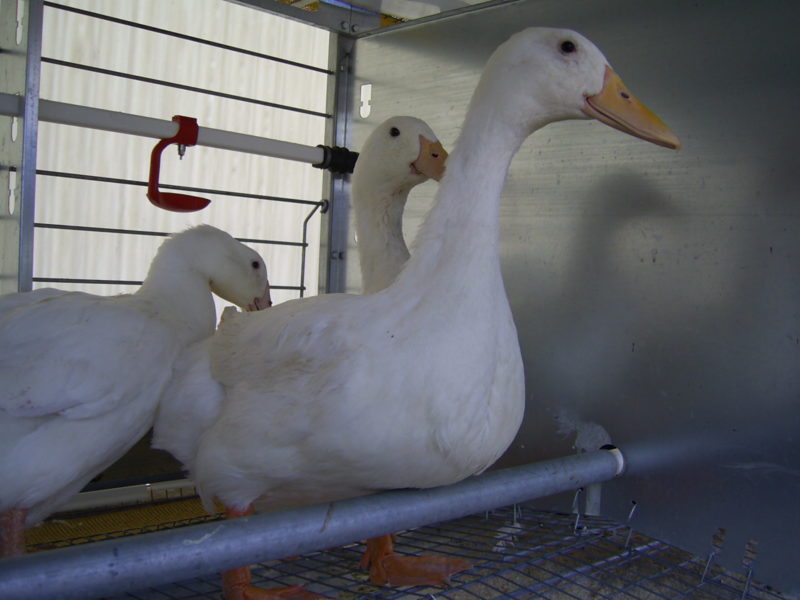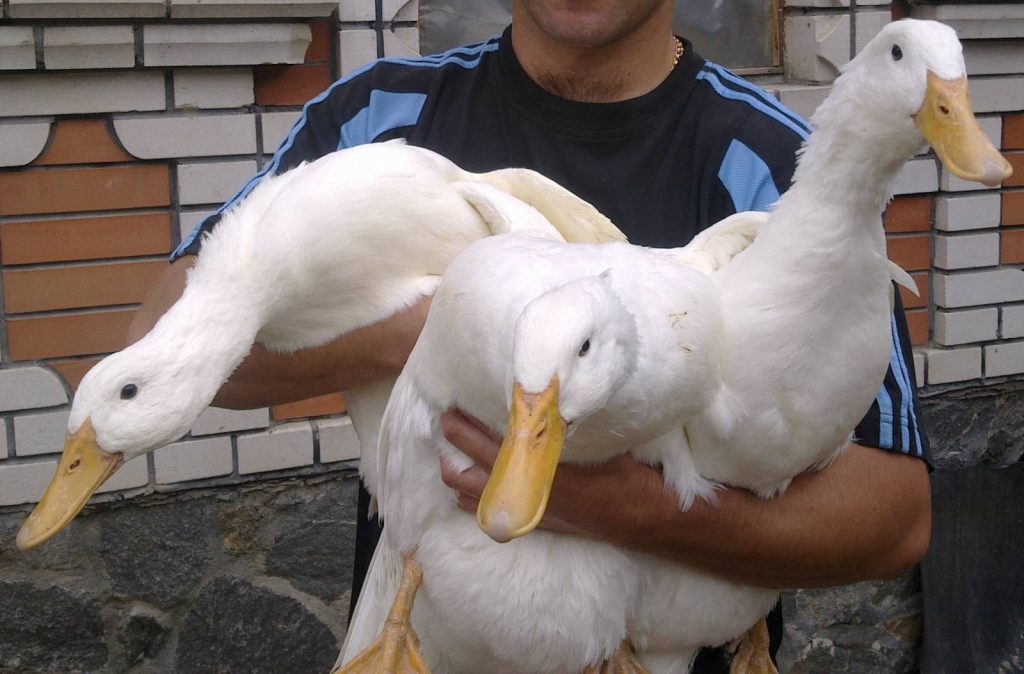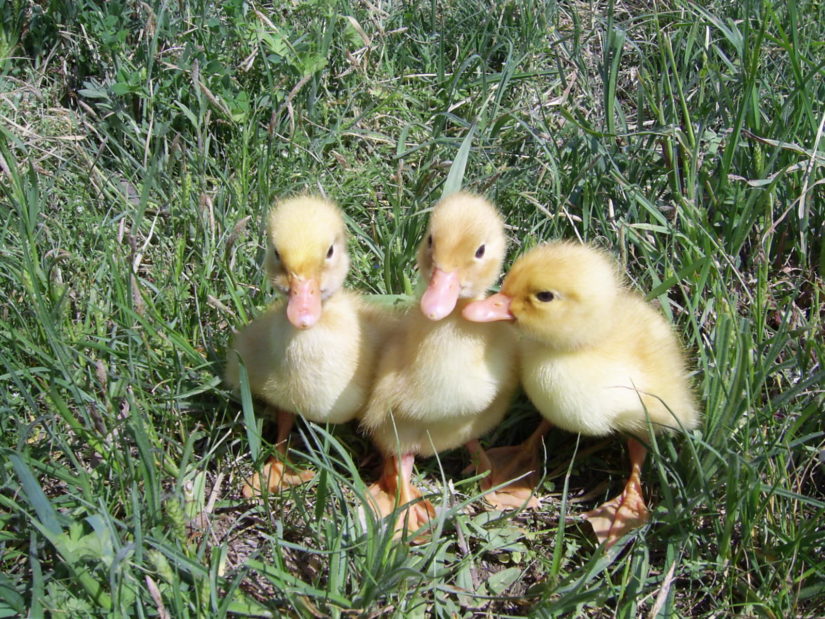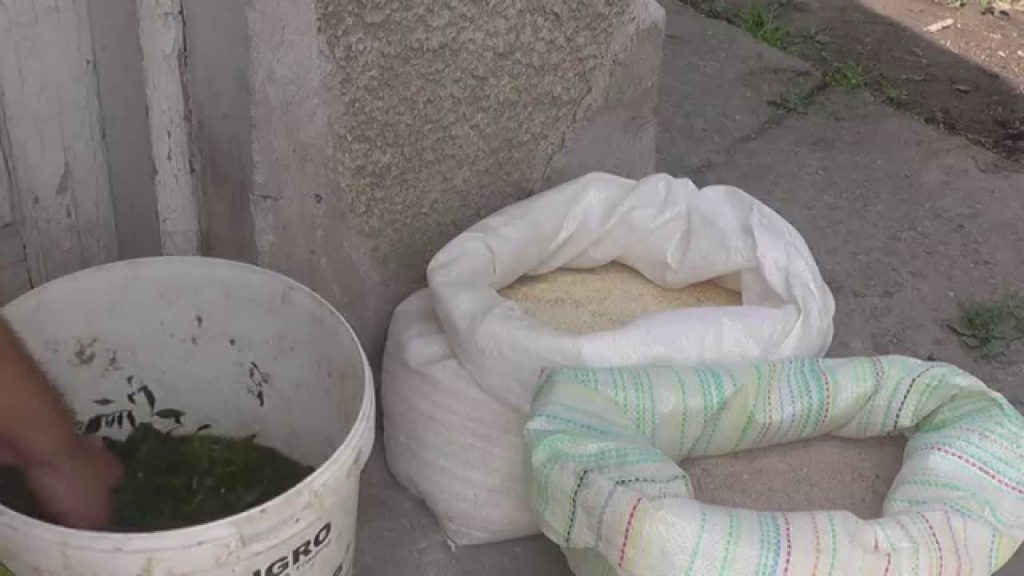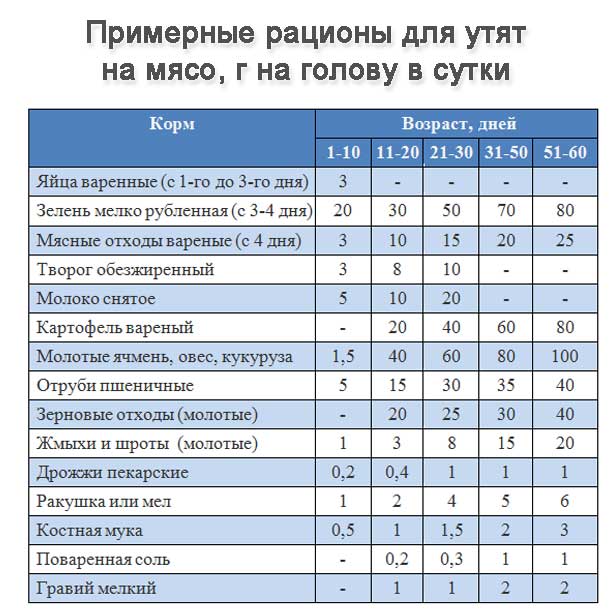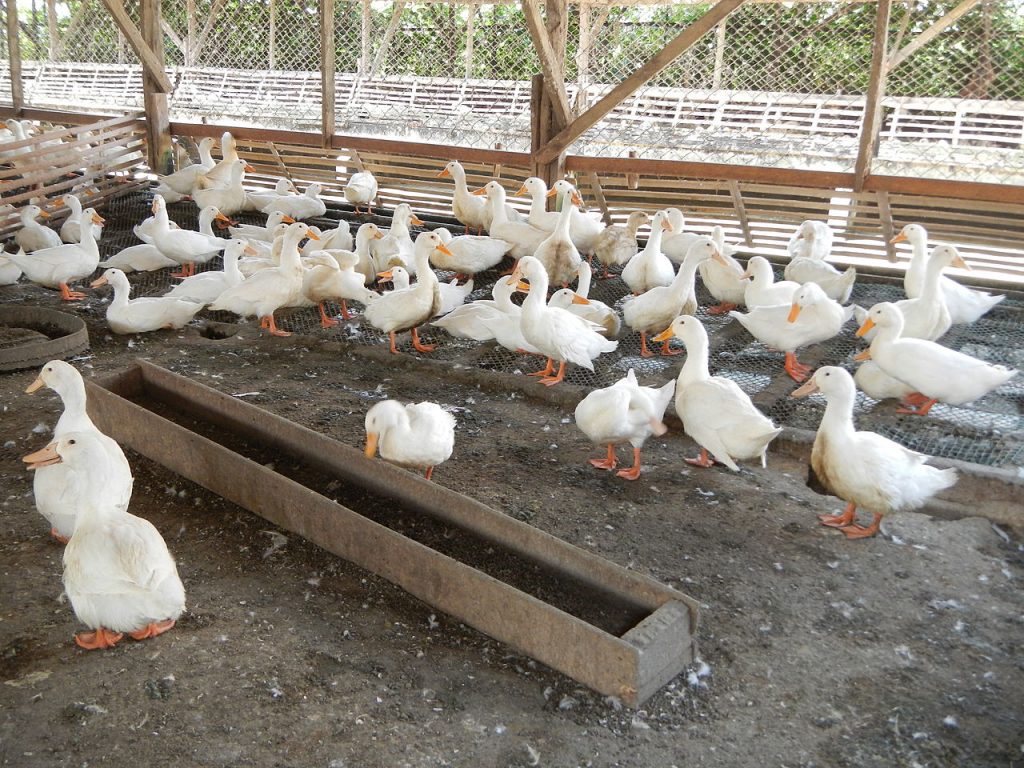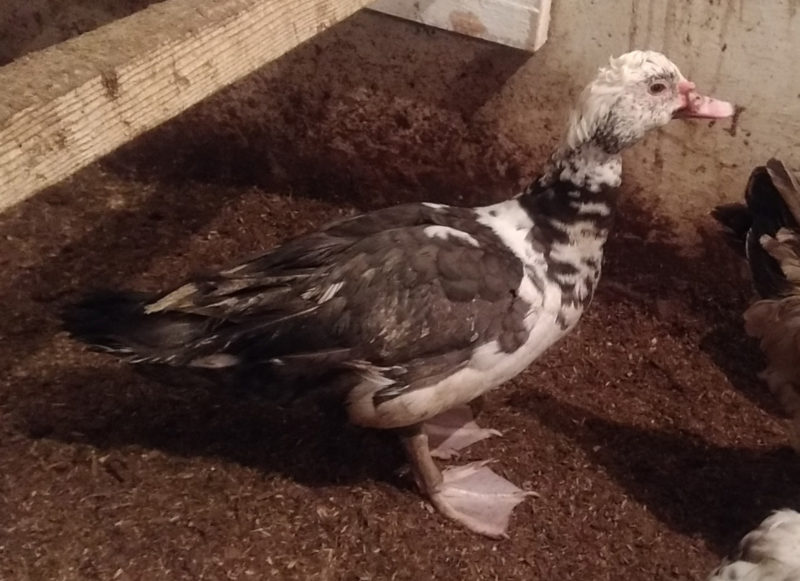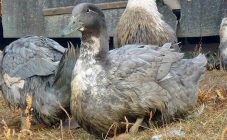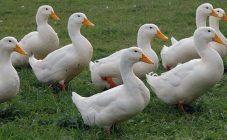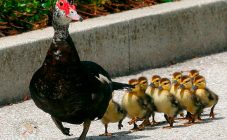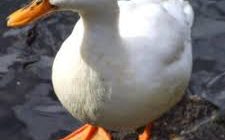Content:
Temp ducks are superior to other birds due to their unique characteristics and high performance. Due to its vitality, adaptability to different conditions and early maturity, this breed has become one of the most popular among Russian poultry breeders.
Breeding history
Temp ducks are distant relatives of Cherry Valley.
In Belarus, breeders decided to cross the Cherry Valley and the Peking duck, after which they got a brood with an amazing egg production.
Currently, the Temp breed is widespread and outstrips its competitors in terms of characteristics. Most Russian and Belarusian farmers breed it because of the fertility of poultry and delicious fatty meat.
This variation is also called Temp-1 or advanced cross. There is also a subspecies - Temp broiler ducks.
Duck Temp: breed description
According to the characteristics of the Temp ducks, they have dense and snow-white plumage. Only the beak and legs are orange.
The head and beak are medium in size. The tail is small, slightly raised upward. The eyes are arranged as two black dots.
The body is straight, not large. Drakes are much larger than females. For 7 weeks after birth, the weight of the male individual reaches 3.6 - 3.8 kg, and the female - 3.4 - 3.5 kg.
The wings have a wide span, there are no separately protruding feathers.
This type of waterfowl is characterized by:
- pulse - 200 beats per minute;
- body temperature - 42 ° C.
Females are fertile. From 140 to 160 eggs are brought in a year, which is a high indicator among other duck breeds.
For novice breeders, the question often arises: how to distinguish males from females.
Features of purebred individuals of different sex:
- in females, as a rule, plumage is paler than in males;
- drakes are always larger than ducks;
- males have a wide beak and a slightly rounded tail, which in females is always straight;
- drakes have a small crest on their necks, they do not have such smooth body curves as ducks.
You can still distinguish by genitals and voice (drakes hiss loudly, and ducks quack).
Keeping and growing at home
Duck Temp does not need particularly careful care. She quickly gets used to different temperatures and is distinguished by its vitality. It is bred to produce fatty meats and large eggs.
Growing
These breed ducks begin to lay at the age of 6 months and produce more than a hundred eggs per year.
Duck eggs incubation lasts 26 - 28 days. The rearing process begins with the selection of eggs. It is necessary to immediately remove those that have significant disadvantages (cracks, deposits, etc.). The selected eggs are recommended to be disinfected in a solution of potassium permanganate and wiped thoroughly with a damp and soft sponge.
The incubator should be kept at about 38 ° C. A little later, it needs to be reduced by one degree and the masonry should be often ventilated. You can spray the eggs with a little warm water and turn over from time to time.
Care and maintenance
Why is temp ducks easier to keep than other birds? Because there is no need to equip reservoirs, as these waterfowl do well without them. Otherwise, the conditions of detention are the same: a light, spacious, comfortable duckhouse, the presence of straw mats. The latter need to be changed periodically, controlling dryness.
The place for walking should be equipped with a canopy that protects from wind, scorching sun, rain. The fence can be in the form of a high fence or strong mesh.
Also, ventilation should be provided in the duckhouse so that fresh air is constantly supplied to the bird, but no drafts are allowed. They are fatal to birds.
Laying ducks will need to make nests. For this, wooden boxes, wicker baskets are suitable, inside which you should put hay, straw or dry grass. Place the nests right on the floor in the corners.
Feeding
Feeding ducks is one of the main components of maintenance and care.
Little ducklings will have enough cottage cheese, millet, root vegetables and boiled eggs. Larger ducks can be fed with compound feeds containing a large amount of useful vitamins and microelements.
The diet of ducks also needs to include:
- products containing proteins (different types of fish, meat, flour);
- foods containing carbohydrates and animal fats.
You can also use algae for feed.
Reproduction
In ducks, the rate of sexual maturity occurs at 6 months. The male begins to show interest in the female in the spring and fall. After mating, the duck sits on eggs, which incubate for 28 days. As a result of anxious waiting, children appear. The duck has a well-developed maternal instinct, therefore, in breeding the breed, you can easily do without an incubator.
All about Temp ducklings
In growing Temp ducklings, it is important to take into account some of the nuances:
The diet
Feeding ducklings is a rather tedious task, especially at first, because they need to be given food 5-6 times a day, since a growing body requires as much nutrients (proteins, fats, carbohydrates) as possible.
The ducklings' diet should include:
- cottage cheese, wheat, boiled eggs;
- flour and grain feed;
- greens and a large amount of vitamins.
Features of care and maintenance
In a duck house with young growth, the temperature should be maintained at 28 - 30 ° C, gradually decreasing by one degree. You also need to install additional lighting that will contribute to the speedy growth and development of the chicks.
- in the first week - 22 hours;
- in the second week - 14 hours;
- in the third week and subsequent - the transition to the usual mode 8-9 hours.
It is recommended to clean the room with Temp ducklings weekly, and wash the drinkers and feeders every day.
Diseases: prevention and treatment
To protect birds from various diseases, it is necessary to carry out prevention and careful examination of individuals. If alarming symptoms appear, you should immediately start treatment, having previously contacted the veterinarian (it is absolutely impossible to treat yourself by giving drugs, and it is absolutely impossible to do any actions).
Alarming symptoms:
- wobbly gait;
- exhaustion and lack of appetite;
- hanging wings;
- lack of activity and growth retardation.
A similar condition may indicate the following ailments: goiter disease, vitamin deficiency.
At the first signs of illness, the following measures should be taken:
- eliminate the cause of the disease;
- disinfect the premises;
- start giving medication prescribed by your veterinarian;
- quarantine the infected individuals.
All this will help to avoid timely preventive measures. We are talking about weekly airing of the duck house and disinfection of every corner of the room.
Breed advantages and disadvantages
Advantages:
- They do not need an equipped reservoir.
- Benefit annually in the form of meat and 150 large eggs.
- Resistance to various ailments and diseases (rarely get sick with proper care).
- Show special care and loyalty to their offspring.
- They are distinguished by a high growth rate and early puberty.
- Ducks of this breed are hardy and quickly adapt to external conditions.
As for the cons, they simply do not exist. Yes, raising and keeping Temp ducks is not an easy task, but no more difficult than raising chickens or geese. In any case, it is worth the effort and will bring great benefits to the breeder.
